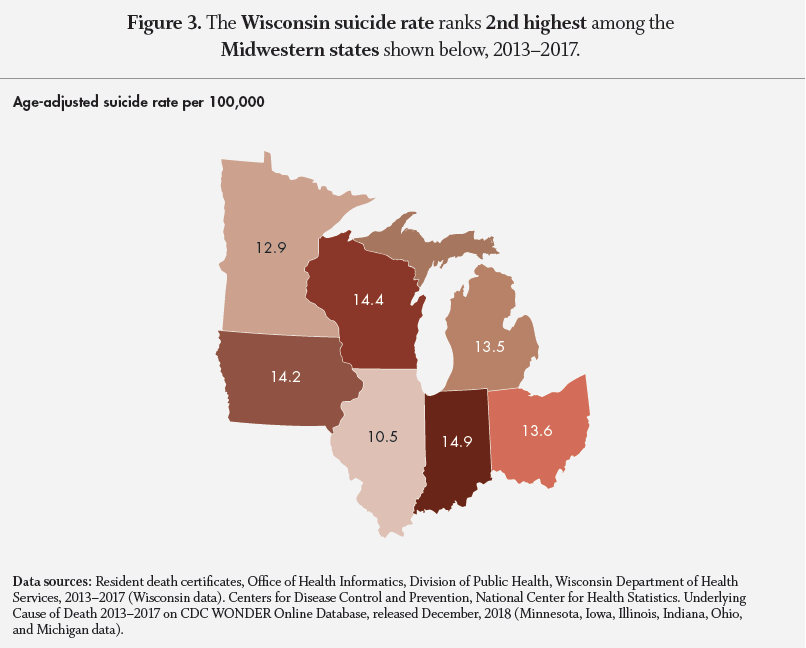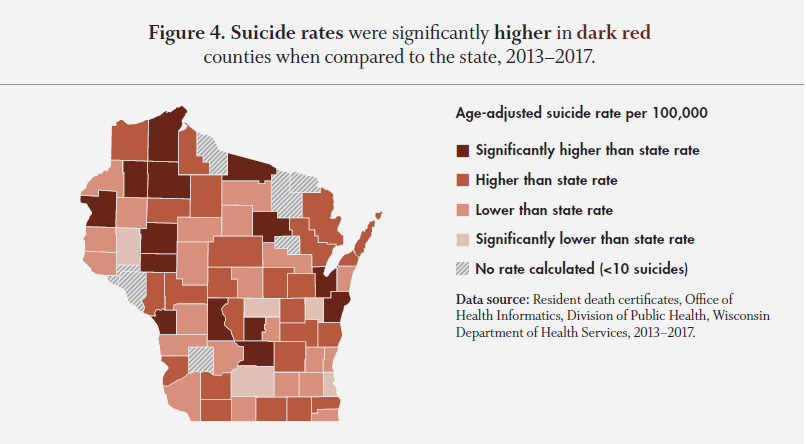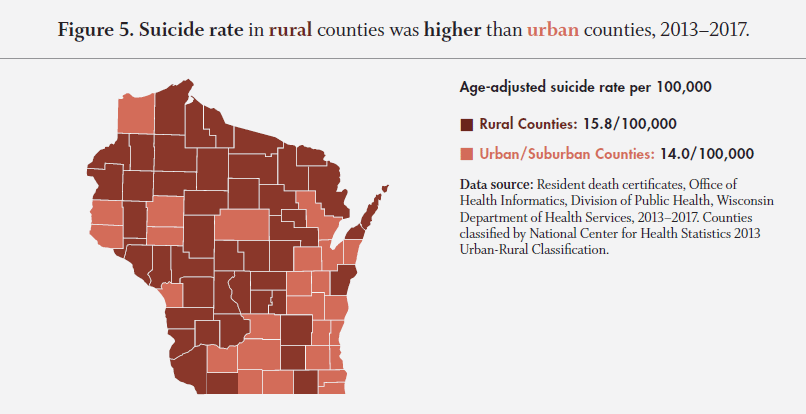Suicide rates can vary greatly depending on the location of residence. Each state, county, and community has varying resources available to people experiencing suicidal thoughts and behavior. Social and economic conditions in specific areas can contribute to geographic variation in suicide. In addition, factors such as stigma can differ among specific populations and can create barriers to accessing mental health and substance use services.

Figure 3. The age-adjusted suicide rate in Wisconsin was significantly higher when compared with Ohio, Michigan, Minnesota, and Illinois. The age-adjusted suicide rate was not significantly different from Iowa and Indiana.

Figure 4. Among the counties for which a suicide rate was calculated, the rates of suicide were significantly higher in Bayfield, Brown, Chippewa, Columbia, Eau Claire, Juneau, La Crosse, Langlade, Marquette, Manitowoc, Polk, Sawyer, Vilas, and Washburn when compared to the state rate. The rates of suicide were significantly lower in Calumet, Dane, Dunn, Milwaukee, and Waushara when compared to the state rate. A table with counts and rates for counties is provided in Appendix 5.

Figure 5. Rural counties had a significantly higher rate of suicide when compared with urban counties for this time period.